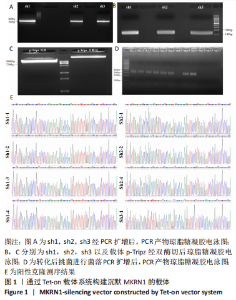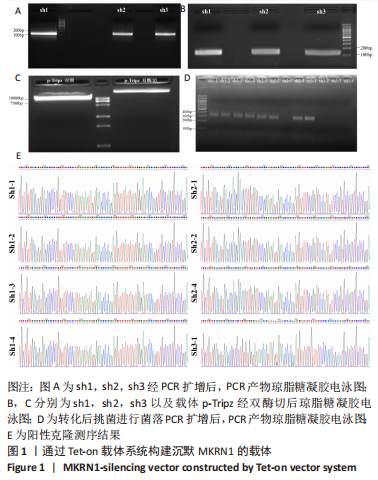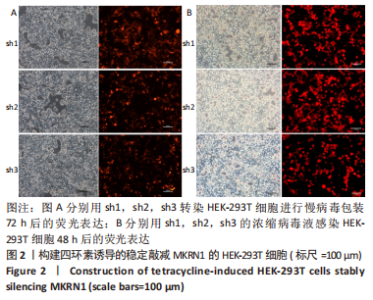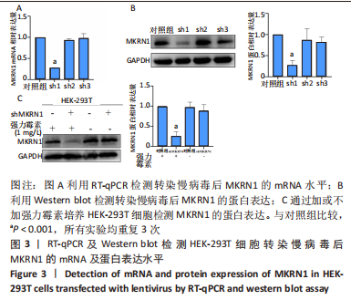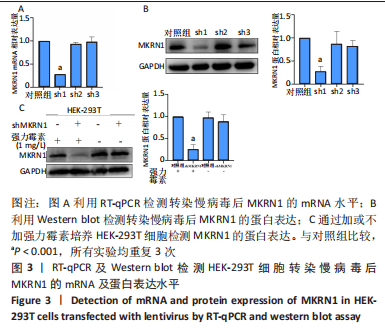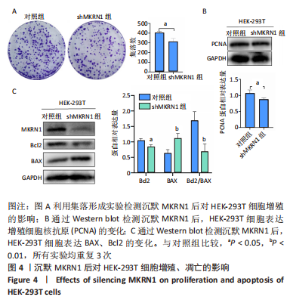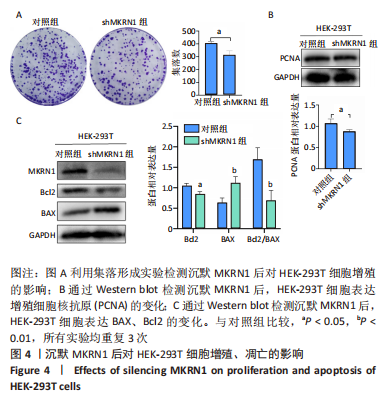[1] DAS AT, TENENBAUM L, BERKHOUT B. Tet-On Systems For Doxycycline-inducible Gene Expression. Curr Gene Ther. 2016;16:156-167.
[2] GOSSEN M, FREUNDLIEB S, BENDER G, et al. Transcriptional activation by tetracyclines in mammalian cells. Science. 1995;268:1766-1769.
[3] MATHIAS H, NIELS H, RAINER L, et al. Improved Tet-responsive promoters with minimized background expression. BMC Biotechnology. 2010;10(1):81.
[4] SUN Y, CHEN X, XIAO D. Tetracycline-inducible Expression Systems: New Strategies and Practices in the Transgenic Mouse Modeling. Acta Biochimica Et Biophysica Sinica. 2010;39(004):235-246.
[5] MONTERO-MOLINA S, ARREDONDO-ESPINOZA E, SOLÍS-ESTRADA J, et al. Molecular Cloning and Transient Expression of Recombinant Human PPARγ in HEK293T Cells Under an Inducible Tet-on System. Mol Biotechnol. 2019;61:427-431.
[6] ZHOU Z, TAO Z, LEE CG, et al. Tetracycline-controlled transcriptional regulation systems: advances and application in transgenic animal modeling.Semin Cell Dev Biol. 2002;13(2):121-128.
[7] ADHIKARY S, MARINONI F, HOCK A, et al. The ubiquitin ligase HectH9 regulates transcriptional activation by Myc and is essential for tumor cell proliferation. Cell. 2005;123(3):409-421.
[8] HAJIKHEZRI Z, DARWEESH M, AKUSJÄRVI G, et al. Role of CCCH-Type Zinc Finger Proteins in Human Adenovirus Infections. Viruses. 2020; 12(11):1322.
[9] ZHU J, ZHAO C, ZHUANG T, et al. RING finger protein 31 promotes p53 degradation in breast cancer cells. Oncogene. 2016;35(15):1955-1964.
[10] WANG XW, WEI W, WANG WQ, et al. RING finger proteins are involved in the progression of barrett esophagus to esophageal adenocarcinoma: a preliminary study. Gut Liver. 2014;8(5):487-494.
[11] LEE EW, LEE MS, CAMUS S, et al. Differential regulation of p53 and p21 by MKRN1 E3 ligase controls cell cycle arrest and apoptosis. EMBO J. 2009;28(14):2100-2113.
[12] KO A, SHIN JY, SEO J, et al. Acceleration of gastric tumorigenesis through MKRN1-mediated posttranslational regulation of p14ARF. J Natl Cancer Inst. 2012;104(21):1660-1672.
[13] BAI X, YANG H, PU J, et al. MKRN1 Ubiquitylates p21 to Protect against Intermittent Hypoxia-Induced Myocardial Apoptosis. Oxid Med Cell Longev. 2021;2021:9360339.
[14] LEE EW, KIM JH, AHN YH, et al. Ubiquitination and degradation of the FADD adaptor protein regulate death receptor-mediated apoptosis and necroptosis. Nature Commun. 2012;3:978.
[15] LEE MS, JEONG MH, LEE HW, et al. PI3K/AKT activation induces PTEN ubiquitination and destabilization accelerating tumourigenesis. Nature Commun. 2015;6:7769.
[16] GRAY TA, HERNANDEZ L, CAREY AH, et al. The Ancient Source of a Distinct Gene Family Encoding Proteins Featuring RING and C3H Zinc-Finger Motifs with Abundant Expression in Developing Brain and Nervous System. Genomics. 2000;66(1):76-86.
[17] KIM JH, PARK SM, KANG MR, et al. Ubiquitin ligase MKRN1 modulates telomere length homeostasis through a proteolysis of hTERT. Genes Dev. 2005;19(7):776-781.
[18] CASSANDRI M, SMIRNOV A, NOVELLI F, et al. Zinc-finger proteins in health and disease. Cell Death Discov. 2017;3:17071.
[19] SINGH JK, VAN ATTIKUM H. DNA double-strand break repair: Putting zinc fingers on the sore spot. Semin Cell Dev Biol. 2021;113:65-74.
[20] LAMBERT SA, JOLMA A, CAMPITELLI LF, et al. The Human Transcription Factors. Cell. 2018;172:650-665.
[21] GRAY TA, HERNANDEZ L, CAREY AH, et al. The ancient source of a distinct gene family encoding proteins featuring RING and C(3)H zinc-finger motifs with abundant expression in developing brain and nervous system. Genomics. 2000;66:76-86.
[22] FERREIRA MV, CABRAL ET, COROADINHA AS. Progress and Perspectives in the Development of Lentiviral Vector Producer Cells. Biotechnol J. 2021;16:e2000017.
[23] NALDINI L, BLÖMER U, GALLAY P, et al. In vivo gene delivery and stable transduction of nondividing cells by a lentiviral vector. Science. 1996; 272:263-267.
[24] SANBER KS, KNIGHT SB, STEPHEN SL, et al. Construction of stable packaging cell lines for clinical lentiviral vector production. Sci Rep. 2015;5:9021.
[25] ELSNER C, BOHNE J. The retroviral vector family: something for everyone. Virus Genes. 2017;53:714-722.
[26] 张岩松, 陈丽娇, 张婷,等. 基因治疗的研究进展[J]. 中国细胞生物学学报,2020,42(10):1858–1869.
[27] Zhang J, Chen L, Zhang J, et al. Drug Inducible CRISPR/Cas Systems. Comput Struct Biotechnol J. 2019;17:1171-1177.
[28] TOMOHIKO U, HIROYUKI Y, NAOTO M, et al. Single-Construct Polycistronic Doxycycline-Inducible Vectors Improve Direct Cardiac Reprogramming and Can Be Used to Identify the Critical Timing of Transgene Expression. Int J Mol Sci. 2017;18(8):1805.
[29] SANCHEZ G, LINDE SC, COOLON JD.Genome-wide effect of tetracycline, doxycycline and 4-epidoxycycline on gene expression in Saccharomyces cerevisiae. Yeast. 2020;37:389-396.
[30] YAO F, WALKER PD, MACKENZIE RG. A Tet-on system for DRD1-expressing cells. PLoS One. 2013;8:e72681.
[31] WISHART JA, HAYES A, WARDLEWORTH L, et al. Doxycycline, the drug used to control the tet-regulatable promoter system, has no effect on global gene expression in Saccharomyces cerevisiae. Yeast. 2005;22(7):565-569.
[32] 王晓, 朱君, 吴亮,等. Tet-on慢病毒系统表达弓形虫ROP18的研究[J]. 中国寄生虫学与寄生虫病杂志,2015,33(1):25-28.
[33] 丁晓琛, 乔一桓, 姜勋亮,等. 四环素诱导的YAP1敲减系统的建立及其对胃癌细胞功能的影响[J]. 西安交通大学学报(医学版), 2020,41(5):690-695.
[34] CARDANO M, TRIBIOLI C, PROSPERI E. Targeting Proliferating Cell Nuclear Antigen (PCNA) as an Effective Strategy to Inhibit Tumor Cell Proliferation. Curr Cancer Drug Targets. 2020;20(4):240-252.
[35] LUO Y, WANG Q, TIAN P, et al. Highly expressed CHAF1A and PCNA are positively associated with malignancy of cervical squamous cell carcinoma. Xi Bao Yu Fen Zi Mian Yi Xue Za Zhi. 2017;33(12):1696-1701.
[36] ZHANG K, CHEN L, ZHANG Z, et al. Ubiquitin-like protein FAT10: A potential cardioprotective factor and novel therapeutic target in cancer. Clin Chim Acta. 2020;510:802-811.
[37] LALIER L, CARTRON PF, JUIN P, et al. Bax activation and mitochondrial insertion during apoptosis. Apoptosis. 2007;12(5):887-896.
[38] LI YN, NING N, SONG L, et al. Derivatives of deoxypodophyllotoxin induce apoptosis through Bcl-2/Bax proteins expression. Anticancer Agents Med Chem. 2021;21(5):611-620. |
